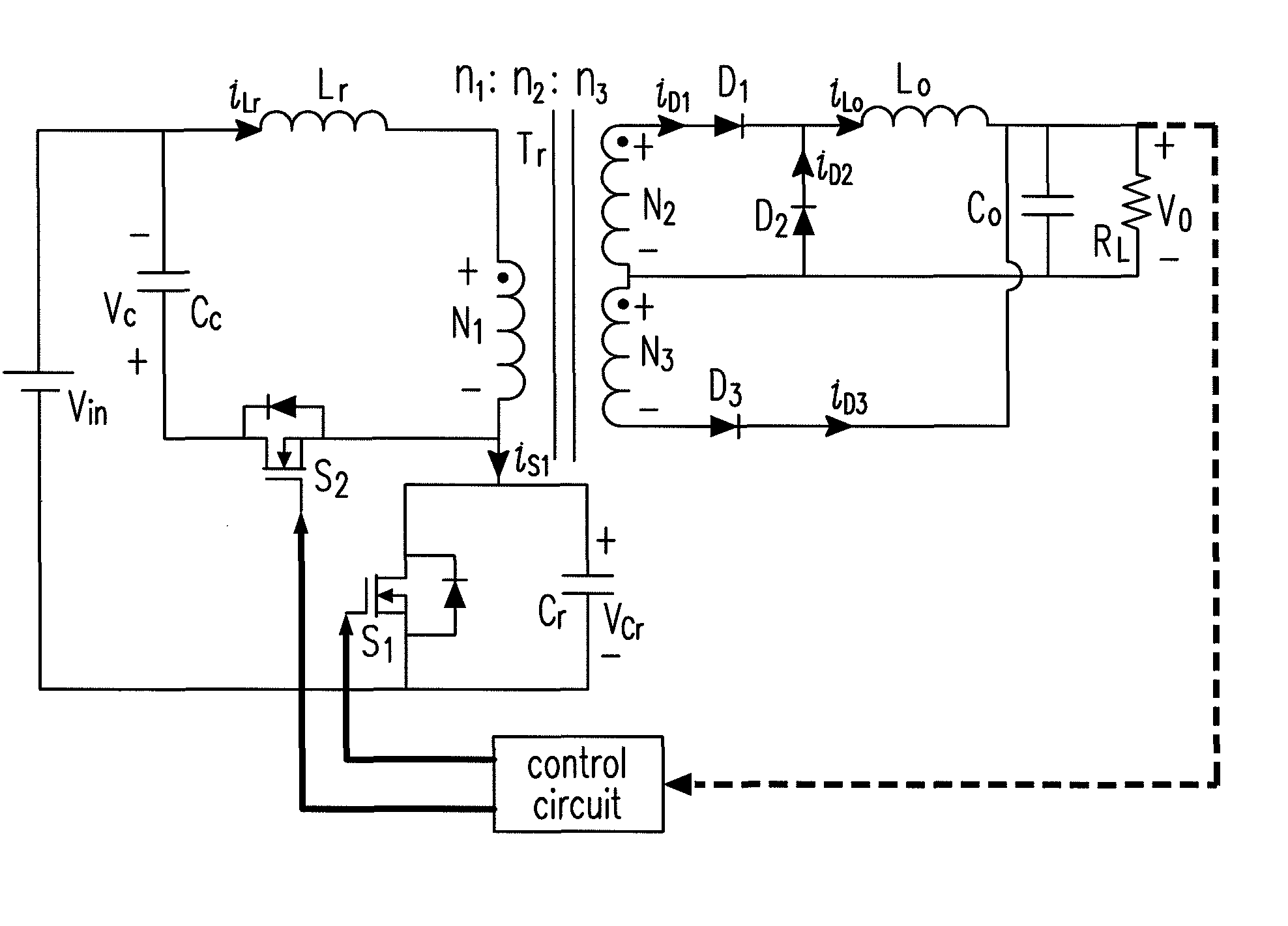Forward-flyback converter with active-clamp circuit
a forward-flyback converter and active-clamp technology, which is applied in the direction of dc-dc conversion, power conversion systems, climate sustainability, etc., can solve the problems of low efficiency and low voltage across the secondary winding of the flyback sub-circuit, and achieve the improvement of the drawback of insufficient resonant current, the effect of reducing unnecessary element power loss and high conversion efficiency
- Summary
- Abstract
- Description
- Claims
- Application Information
AI Technical Summary
Benefits of technology
Problems solved by technology
Method used
Image
Examples
Embodiment Construction
[0023]FIG. 3 shows a circuit diagram of a forward-flyback converter with the buck-boost type active-clamp circuit according to the first preferred embodiment of the present invention, it includes a forward-flyback converter with the buck-boost type active-clamp circuit and a control circuit. Through the control circuit, an output voltage regulation and a rapid response function under dynamic load variation could be achieved. The polarities of each voltage amount and the direction of each current amount of the active-clamp forward-flyback converter are defied in FIG. 3. With the use of transformer Tr, the input energy could be transmitted continuously to the output terminal via the secondary windings N2 and N3 of the transformer Tr and the flyback sub-circuit could be deactivated under the light load condition. The transformer Tr includes a primary winding N1, a first secondary winding N2 and a second secondary winding N3, and the turns ratio of the windings N1, N2 and N3 is: n1:n2:n...
PUM
 Login to View More
Login to View More Abstract
Description
Claims
Application Information
 Login to View More
Login to View More - R&D
- Intellectual Property
- Life Sciences
- Materials
- Tech Scout
- Unparalleled Data Quality
- Higher Quality Content
- 60% Fewer Hallucinations
Browse by: Latest US Patents, China's latest patents, Technical Efficacy Thesaurus, Application Domain, Technology Topic, Popular Technical Reports.
© 2025 PatSnap. All rights reserved.Legal|Privacy policy|Modern Slavery Act Transparency Statement|Sitemap|About US| Contact US: help@patsnap.com



